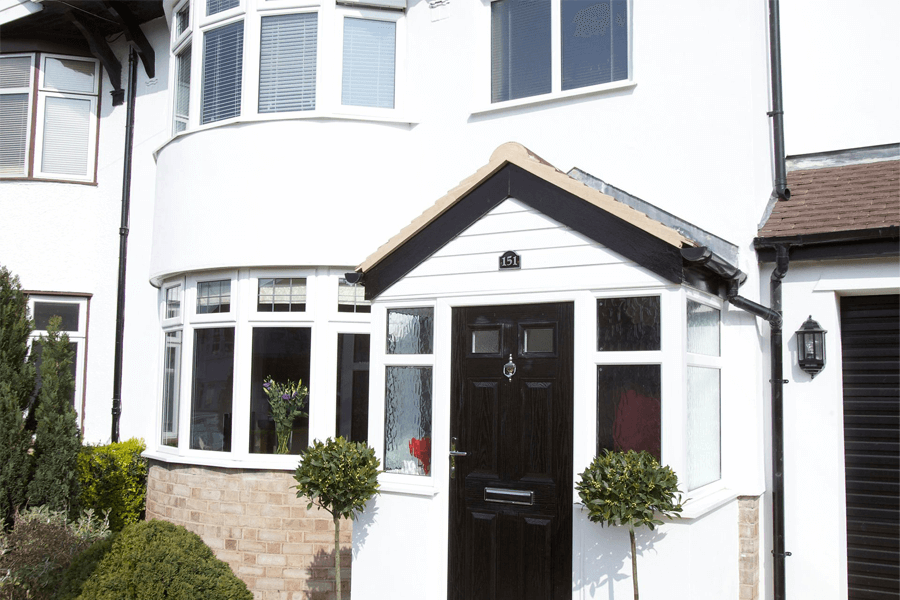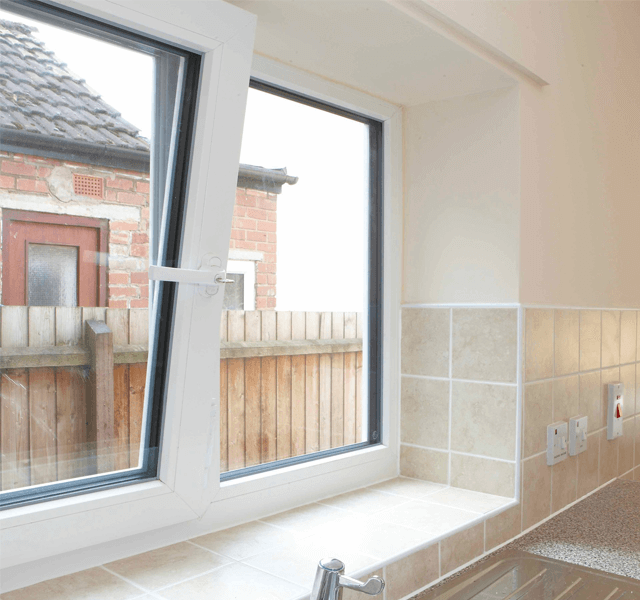Christmas Hours – We will be closing on Friday 19th December 2025 at 4pm and returning on the 5th January 2026.
When it comes to home maintenance, windows often don’t get much attention until there’s a clear problem. Many homeowners wonder when the right time is to replace their uPVC windows rather than continuing to repair them. This is an important question, as windows play a crucial role in your home’s comfort, security, and energy efficiency.
In this guide, we’ll help you understand the typical lifespan of uPVC windows and identify the key signs that suggest replacement might be a better option than repair.

Signs Your Windows Need Replacing
There are several clear signs that your uPVC windows might need replacing. Many homeowners miss these warning signals, but spotting them can help you make timely decisions about window replacement. Here are the main indicators to watch for.
Age of the Windows
The lifespan of uPVC windows typically ranges from 20-30 years, depending on the quality of the frames, the quality of the installation, and how well they’ve been maintained. If your windows are approaching or have passed the 20-year mark, it’s worth checking them more carefully for signs of wear.
Older uPVC windows were often made to lower standards than today’s versions. They usually had fewer internal chambers in the frames for insulation and less efficient seals. This means even if they still look okay, they’re probably much less energy efficient than modern alternatives.
Draughts and Cold Spots
One of the clearest signs that windows need replacing is noticeable draughts coming from around the frames. You might feel cold air when standing near the windows or notice that rooms with older windows are harder to keep warm.
To check for draughts, you can hold a lit candle near the window frames on a windy day and if the flame flickers significantly, air is getting through. Similarly, if you notice cold spots on interior walls near windows, this suggests heat is being lost through inefficient glazing.
Condensation Between Panes
Double glazing works by trapping air or gas between two panes of glass to create an insulating barrier. If you notice condensation or fogging between these panes (not on the room-side or outside surface), this indicates that the seal has failed, and moisture has entered the gap.
Once this happens, the insulating properties of the window are significantly reduced. The window won’t be as effective at keeping heat in, and your energy bills will likely increase as your heating system works harder to compensate.
Unfortunately, when condensation appears between panes, the sealed glass unit needs replacing.
Operational Problems
Windows that are difficult to open or close, that stick, or won’t stay open are showing signs of mechanical failure. These issues typically occur when:
- Frames have warped due to temperature changes and weathering
- Hinges have corroded or worn out
- Handles or locking mechanisms have failed
- The window was poorly installed
While hinges and handles can sometimes be replaced, if the frames themselves have warped or degraded, repairs become more difficult and less effective. Warped frames can create security vulnerabilities and allow water ingress.
Visible Damage or Discolouration
UPVC doesn’t rot like wood, but it can deteriorate over time. Look for signs such as:
- Yellowing or severe discolouration of the white uPVC
- Cracks in the frames
- Corner joints that have begun to separate
- Frames that feel soft or flexible rather than rigid
Discolouration is mainly an aesthetic issue, but cracks and separation indicate structural problems that can affect the window’s performance and security.
Increasing Energy Bills
If you’ve noticed your heating bills climbing despite no significant change in energy prices, inefficient windows could be the culprit. Windows are a major source of heat loss in most homes.
Modern uPVC windows have much better thermal performance than older versions. Our windows at BSF use multi-chambered frames designed specifically to trap air and improve insulation. This, along with energy-efficient double or triple glazing, reduces heat loss substantially compared to older or single glazed units.

Our uPVC Window Styles
If you’ve decided it’s time to replace your windows, we offer a range of styles to suit different homes and preferences:
- Casement Windows: The UK’s most popular style, which is hinged at the side and opens outward.
- Flush Sash Windows: Windows that close flush with the frame, creating a sleek look that’s perfect for period properties.
- Sliding Sash Windows: These slide vertically rather than opening outward, ideal for traditional homes wanting to maintain character.
- Tilt and Turn Windows: Can either tilt inward for ventilation or open fully inward for easy cleaning, great for upper floors.
- Bay and Bow Windows: Project outward from your home to create additional interior space and let in more natural light.
- Residence Collection Windows: Premium uPVC wood-effect windows designed specifically for period properties and conservation areas.
- Cottage Style Windows: Feature grid patterns that divide the glass into smaller sections for a traditional, charming appearance.
All our window styles come with energy-efficient double glazing as standard, with options for triple glazing for even better thermal performance.

Making the Right Decision for Your Home
Replacing your uPVC windows is a significant investment, but one that can improve your home’s comfort, appearance, and energy efficiency for decades to come. If you’re seeing multiple signs of window failure – such as draughts, condensation between panes, or operational problems – it’s probably time to consider replacement rather than continued repairs.
Modern uPVC windows offer substantial improvements over older versions in terms of thermal performance, security, and durability. While there’s an upfront cost, the long-term benefits in comfort, reduced maintenance, and lower energy bills make replacement worthwhile for many homeowners.
We’d love to welcome you to our Surrey showroom. Here, you can view and use our range of windows and other products and discuss your home improvement project with our friendly team.
For more information, or to arrange a free, no obligation quote, please call us on 01293 408 713, email us at bsfwindows@gmail.com, or use our online contact form.
Frequently Asked Questions
How long do UPVC windows last?
Good quality uPVC windows usually last between 20-30 years.
Can I just replace the glass in my windows rather than the whole unit?
If your frames are in good condition but the glass units have failed, it is sometimes possible to just replace the glass. However, if your frames are also showing signs of wear or are very old, complete replacement is often more cost-effective.
Do you offer alternatives to UPVC windows?
Yes, we offer aluminium windows for homeowners looking for slimmer frames and a more contemporary appearance, and Timber Windows, which are great for older, heritage properties.
More From Us
Key Considerations for Choosing Kitchen Windows
